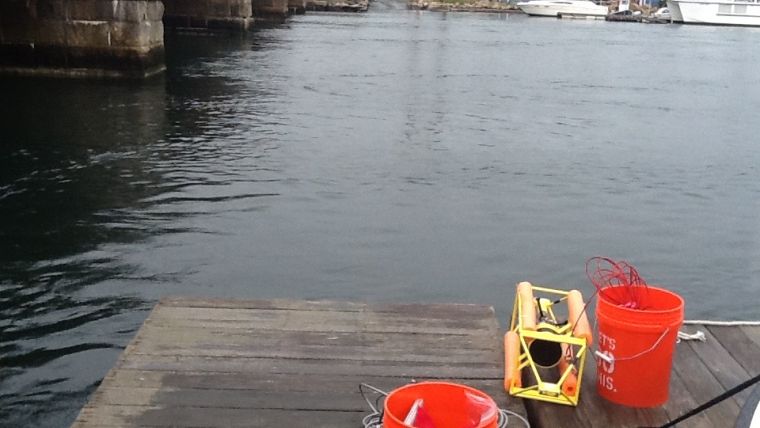Data Transmission Tests in Advance of Tidal Power Test Site
Engineers associated with the Bourne Tidal Test Site (BTTS) have been field testing a simulation of the data acquisition system that will be installed on the actual tidal turbine test structure. BTTS is going through its last paces for permitting and once the US Army Corps of Engineers, USACE, signs off, the actual test structure will be installed.
To enable tidal device designers and developers to understand how their turbine is performing in the Cape Cod Canal, they will need to know what the current velocity is during all tide cycles. In order to do that, a team of engineers, inventors and scientists are collaborating to see firsthand how fast the water is moving in the Cape Cod Canal and how much power one might be able to harness once a turbine is installed.
There have been several small-scale demonstrations done in waters near Buzzards Bay, using small parts and home-spun resources to show how data from the FSI ACM Current Meter can be collected, processed and transmitted via sophisticated telemetry to computers anywhere in the world.
Collection and Processing of Current Data
FSI’s ACM-Plus-200 is measuring current in metres per second. That data is then being processed using software provided by piRshared (Wareham, MA). That ‘scrubbed’ data will eventually be transmitted through a computer that will be installed on top of the tidal test structure. The data will then be transmitted via Wifi and/or cellular service to the website for display.
The data output is being hosted at a website which was created by Bradshaw Lupton of piRshared, a Wareham system integrator and engineering genius. piRshared is supplying system design, integration, many small and big parts and a demonstration site located close to the canal.
A key element of the BTTS project is to inspire students of all stripes to get involved. Thanks a volunteer, Bradshaw Lupton of piRshared, the FSI ACM could be added to the pool during the recent MATE ROV Competition at the Sandwich STEM Academy pool to show the students, teachers and parents how to capture, transmit and display real time water velocity data using off the shelf equipment and ingenuity. John Miller, executive director, MRECo, states the organisation continue to demonstrate the ins and outs of the data transmission system that when fully operational aboard the BTTS structure will enable students from around the world to access the data and make predictions of power output for their various engineering projects.














